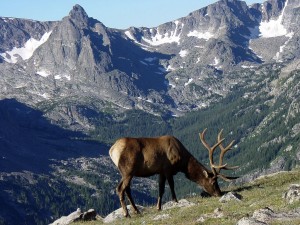We have much more to do and your continued support is needed now more than ever.
Will New Interior Secretary Put Conservation On Equal Ground with Energy?
On Wednesday, President Barack Obama nominated Sally Jewell, CEO for the outdoor outfitter REI, as successor to Ken Salazar as Secretary of the U.S. Department of the Interior. Conservation groups, senators and Western energy producers alike praised the selection as a smart choice to do everything from protecting land, connecting kids to nature, addressing climate change, creating jobs and increasing development.

Hopefully future Secretary Jewell will accomplish that vision by heeding the words of former Interior Secretary Bruce Babbitt, who spoke this week at the National Press Club on the importance of restoring a true balance of conservation and energy development on public lands.
“On Equal Ground”
At the press conference, Sec. Babbitt praised the “excellent record” of Pres. Obama and Sec. Salazar, citing accomplishments like new vehicle fuel efficiency standards, doubling the production of renewable energy, protecting the Grand Canyon from uranium mining, creating an innovative management plan for Alaska’s Arctic Reserve, and more. But he also called on the Obama administration to improve his public lands conservation legacy in the second term by putting conservation on “equal ground” as energy development.
Babbitt compared the number of acres of permanently protected land under Obama to the last few presidents. The number has drastically declined during Obama’s tenure. Meanwhile, Babbitt noted, “the pace of oil and gas leasing on public lands has continued at a high rate.” While Secretary Babbitt acknowledged that energy development is an appropriate use of public lands, but clearly demonstrated the current imbalance of conservation and development, skewed heavily in favor of oil and gas drilling.
To restore this balance, Babbitt is calling on Interior (and thus future Sec. Jewell) to recommit to conservation. For every acre of land leased to oil and gas, Babbitt proposed, the administration (and Congress) should protect a new acre of land for conservation. He also urged President Obama to use his existing authority to designate new special places such as National Monuments or Wildlife Refuges in order to spur action from Congress. Capitol Hill needs a wake-up call — the 112th Congress is the first since WWII that did not designate even an acre of federal wilderness. Protecting the outdoors is not a radical idea. A new “State of the Rockies Conservation in the West” poll from Colorado College shows the overwhelming support of Western voters for protecting land and water and opposed the idea of turning public lands over to states and private interests.
“Where is the Balance?”
Former Secretary Babbitt is right: renewing the commitment between America and protection of the great outdoors will continue to ensure that future generations will be able to enjoy our country’s proud outdoor heritage and wildlife. The Sportsmen for Responsible Energy Development (SFRED) coalition, a group led by National Wildlife Federation, Trout Unlimited, and the Theodore Roosevelt Conservation Partnership, advocates for this same balanced approach on public lands, taking into account the cumulative impact to fish, wildlife habitat and water resources as well as hunting and fishing opportunities.

Fortunately, perseverance and citizen action eventually pays off when it comes to conservation on public lands. Just this week the Colorado Bureau of Land Management decided to withdraw proposed oil and gas leases that include big game habitat and trout fisheries along the North Fork of the Gunnison River. The decision followed protests and letters from hunters, anglers and wildlife enthusiasts concerned about selling leases using a 23-year-old resource management plan.
I do not envy Sally Jewell’s new job, but it is a critically important position that will shape the future of this country’s energy and conservation future. Forget criticism from special interest groups: Jewell will have her hands full tackling climate change, figuring out ways to deal with potentially devastating budget cuts, protecting new landscapes despite Congressional inaction and finding ways to preserve clean air, water and wildlife. It may still be the honeymoon period, but I am confident that she is up to the task.
![]() The Department of the Interior is facing devastating budget cut proposals from Congress. If we expect Sally Jewell to be able to move conservation forward, she needs the resources to do her job. Take action by sending a message urging Congress to not let the budget crisis devastate wildlife.
The Department of the Interior is facing devastating budget cut proposals from Congress. If we expect Sally Jewell to be able to move conservation forward, she needs the resources to do her job. Take action by sending a message urging Congress to not let the budget crisis devastate wildlife.





















